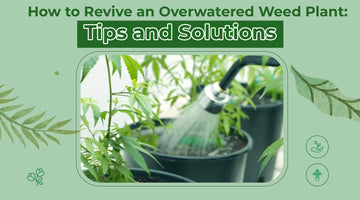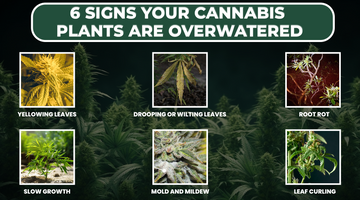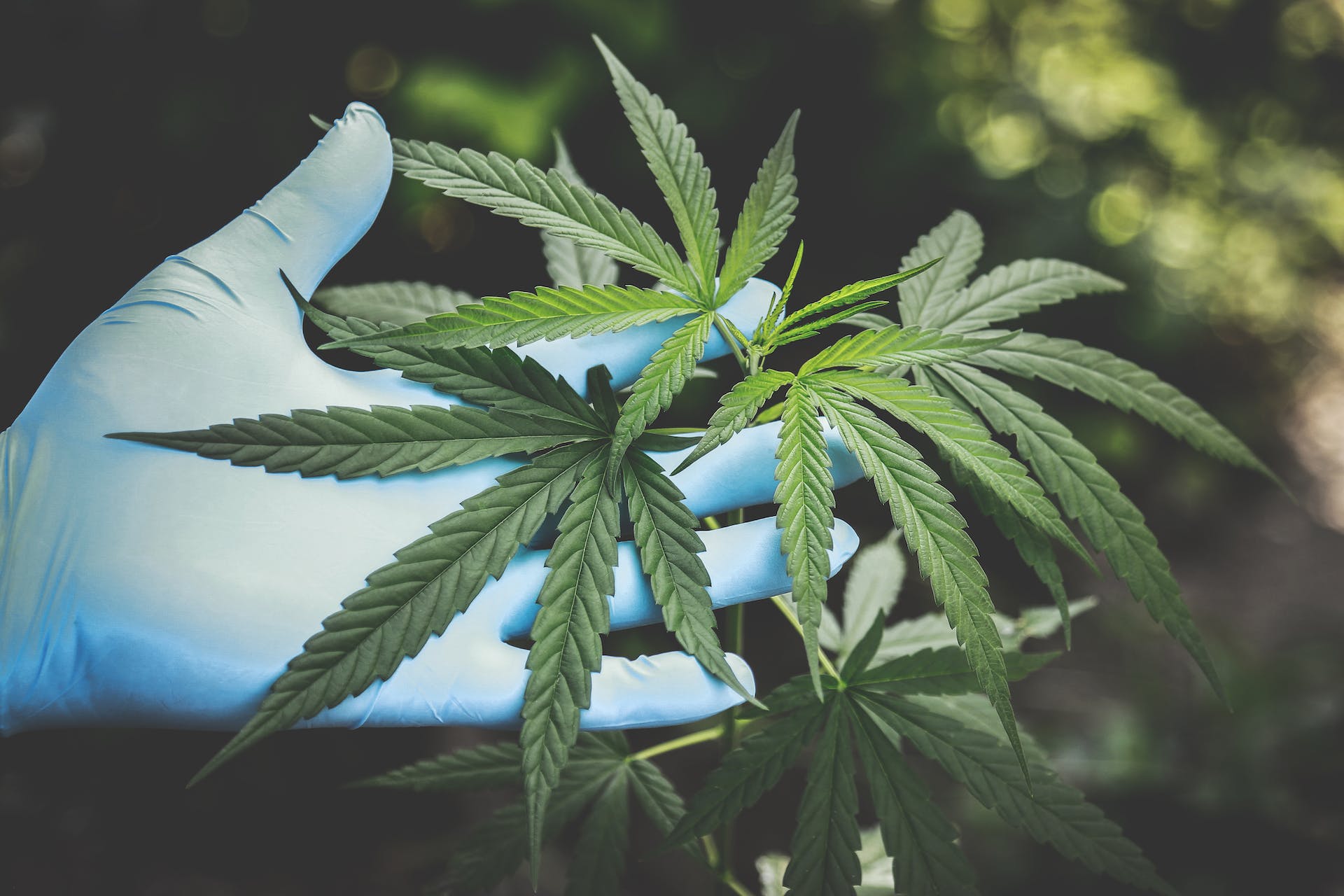
Two things that ensure your plant is blooming and flourishing, are water and sun. Although, if any one of these two things becomes excess then they can even cause death of your dear green babies. When it comes to delicate plants like weeds, overwatering can be extremely dangerous and life–taking. As excess water in these plants can spoil them in a very short time, leading to immediate wilting of the entire plant.
If by any chance you made the mistake of overwatering those little ones but want to revive them. Then this article can prove extremely helpful to you; as the article will explore the signs of overwatering, provide actionable steps for recovery, and discuss the expected recovery timeline.
How to Fix Overwatered Cannabis
What happens after your plant gets excess water, the soil becomes completely saturated, leading to oxygen deprivation in the roots. If there is not enough oxygen, the roots will not function properly, thus hindering the plant’s ability to take in nutrients. Here are a few steps to solve this crisis:
Stop Watering Immediately:
Stopping any watering is the first and most important step. The natural processes of the plant get upset when it is overwatered, so it is crucial to let the soil dry up. This drying process could take a few days, depending on how bad the overwatering was. Wait patiently and fight the impulse of watering the plants; to allow the complete drying up process.
Check Drainage:
For water to not collect at the pot's bottom, adequate drainage is essential. Check to see if the plant pot has enough drainage holes. Consider repotting the plant into a different pot with enough drainage if the one it is in now does not have an adequate draining–out system. Avoid placing any extra eater–catching saucer underneath the pot.
Improve Airflow:
Move your plant to a well-ventilated area or place the overwatered weed plant next to a fan. Increasing the amount of airflow surrounding your plant will hasten the drying process.
Use a Moisture Meter:
Overwatering of the plants can be avoided when we are constantly aware of their requirement and saturation levels. Therefore, a moisture meter is very useful as it helps in measuring soil's water content, thus, it tells you when to water your plant and when not to.
Repot if Required:
If the roots of your overwatered plant are damaged then it is advisable to remove them, and quite literally shift their base. Thus, carefully take the plant out of its existing pot, cut off any damaged roots, and transfer it to a new pot with soil that is well-balanced.
Monitor pH Levels:
Maintaining a proper pH level is necessary as it allows the plant to consume the right amount of nutrients and thus, maintain the good health of those little delicate plants. The normal range of pH for cannabis plants is between 6.0 and 7.0.
Also read :- Exploring the Health Benefits of Dill Weed: A Comprehensive Guide
Recover: Overwatered Weed Plant Recovery
Although a time–consuming process, recovering your overwatered weed plant is possible, let’s see how.
1. Prune Damaged Leaves:
Plants need to concentrate their energy on their growth therefore, you need to remove/pluck out those unnecessary energy–consuming dead or damaged leaves. This will also lessen the chance of mold and disease spreading while also improving the beauty of the plant.
2. Apply Root Stimulators:
Beneficial bacteria found in root stimulators support strong, healthy root development. The plant's overall recovery can be aided by applying a root stimulant, which can assist mend damaged roots and promote the formation of new ones.
3. Monitor Light Exposure:
Make sure the light reaching your plant is just right—not too much though. While too little light can impede the plant's healing, too much light can stress it out. As needed, adjust the exposure to natural light or grow lights.
4. Maintain Optimal Temperature:
An important factor in plant recovery is temperature because maintaining optimum temperature ensures the stability of the plant by lowering its stress and accelerating its recovery. Remember to maintain the appropriate temperature range of 70–85°F (21–29°C) in your surroundings.
5. Use Nutrient Solutions Wisely:
Anything in excess is harmful and you might have understood this when you committed this grave blunder of overwatering your weed plant. Similarly, nutrients that are essential for plants will cause immense problems when over fertilized.
Appearance: What Does an Overwatered Weed Plant Look Like?
Be aware that you do not want to repeat the same mistake of having an overwatered weed plant. Then act fast and wisely to recognize those early signs that your green baby gives you. Mentioned below are some key indicators:
1. Yellowing Leaves:
If the leaves near the bottom of your weed plant are getting yellow, then don’t be relaxed because those are the early signs of crying for help, by your plant. Leaves turn yellow because the roots are unable to absorb nutrients from the soil due to excess water.
2.Wilting or Drooping:
The soil beneath your weed plant is looking perfectly moist? However, still the plant is looking droopy or wilted then this means your soil is overwatered. The plant looks like a wobbly structure because the roots are waterlogged and unable to support the plant’s structure.
3.Moldy or Mushy Soil:
If the soil stays damp for an extended period it might go mushy or moldy. This condition has its dangerous repercussions meaning the plant is growing in soggy soil, which can cause infections and root rot.
4.Slow Growth:
Apart from all other effects the most basic, immediate, and fast effect of overwatering is a stunted growth of your weed plant.
5. Foul Smell:
When roots are left in wet soil for an extended period, they can develop root rot, which can be the common cause of foul smell.
Also read:- Discovering the Best Weed for Anxiety: A Guide to Finding Relief
Recovery Time: Overwatered Weed Plant Recovery Time
The time it takes for an overwatered weed plant to recover depends on several factors. Here’s a general timeline for recovery:
1. Mild Overwatering:
Recovery can begin within a few days to a week if you can read those early warning signs of your plant. During this time, you need to monitor both the soil moisture content and new leaf growth very closely. To make sure your plant is on the right path instead of being stuck in an overwatering phase.
2. Moderate Overwatering:
Recovery time may be one to two weeks in situations when the plant exhibits more noticeable symptoms, such as yellowing leaves and sluggish development. During this time, you will need to exercise patience and give continuous care without going overboard.
3. Severe Overwatering:
It can take up to a month for plants that have been drastically overwatered to recover. There could be severe damage to the roots and a notable loss of leaves on the plant. It is critical to keep your plant away from new stressors while simultaneously, should concentrate on setting up the ideal atmosphere for recuperation during this period.
4. Long-Term Recovery:
It is crucial to keep an eye out for any indications of recurring problems with your plant even after the first healing phase. For long-term health, it is imperative to maintain adequate maintenance and watering habits, since overwatered weed plants might become more vulnerable to future issues.
Why Purchase Cannabis from us?
Looking for premium cannabis seeds and experts to give you growing tips? Visit Higher Quality Seed Corp for the best quality products and advice from our instructors to help you develop healthy, thriving plants.
FAQs
Will overwatered weed plants recover?
Yes, if you take the right steps immediately and address the issue properly, overwatered weed plants can recover.
How to fix an overwatered plant?
Stop watering, improve drainage, enhance airflow, and allow the soil to dry out before watering again.
Can overwatered plants recover on their own?
No, that is not possible. Overwatered plants need human intervention and help to recover.
What does an underwatered weed plant look like?
An underwatered weed plant will have wilted, dry leaves that may curl and turn brown at the edges.




